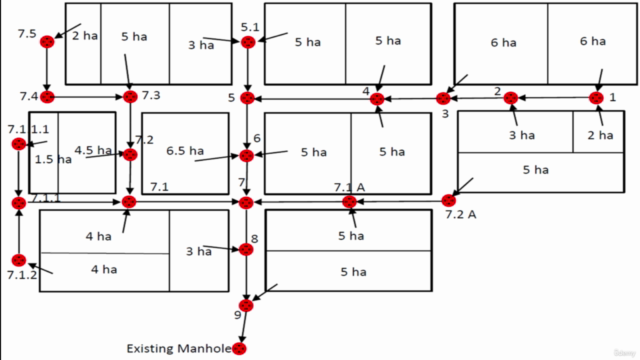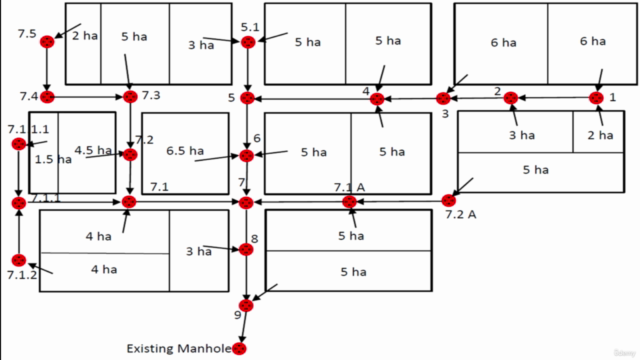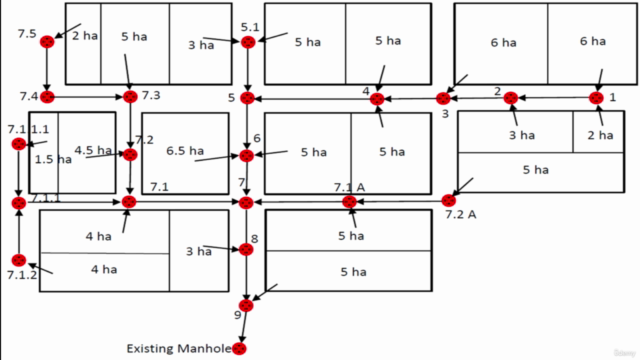Design of Sanitary Wastewater Collection Networks

Why take this course?
🚀 Design of Sanitary Sewage Collection Network using Excel Sheets 🏞️
Course Headline: Master the Art of Sanitary Sewer Design with Dr. Mohammed Hasan Almughalles - A Comprehensive Guide Using Excel Sheets!
Course Description: Are you ready to embark on a journey to become proficient in designing Sanitary Sewage Collection Networks? With the expertise of Dr. Mohammed Hasan Almughalles, this course will equip you with the knowledge and skills to confidently tackle this essential task using Excel sheets. By the end of this course, you'll be able to design accurate and economic sewage systems that are both functional and sustainable.
What You Will Learn:
📘 Course Outline:
Section 1: Introduction 🏘️
- Overview of Sanitary Sewer Collection Systems
- Components and Structures of the Course
Section 2: Basic Considerations in Designing Sewers 📋
- Project Area: Understanding your scope
- Design Period: Planning for current and future needs
- Population Density: Calculating demand based on population
- Field Work: Conducting surveys and assessments
- Final Connection Point: Identifying the endpoints of your system
- The Manholes: 🚅
- Structure: Types and purposes
- Drop Manhole: Handling changes in flow direction
- Manhole Locations and Spacing: Optimizing for efficiency
- The Trench: Insights into trench design and construction considerations
- Alignments and Flow Directions: Strategic planning for optimal flow management
- Numbering of Lines and Manholes: A systematic approach to record keeping
- Pipe Materials: Choosing the right materials for your sewer system
- Design Sewage Flows: Determining flow rates and sources
- Flow Formulas: Applying mathematical models to predict flows
- Partial Flow: Understanding how to account for peak loads and average conditions
Section 3: Design Criteria 📈
- Minimum Size: Ensuring adequate flow capacity
- Minimum and Maximum Velocities: Balancing flow rates and pipe sizing
- Minimum and Maximum Slopes: Optimizing for flow and preventing blockages
- Sewer Depth: Planning for depth based on various factors
- Minimum Cover: Ensuring public safety and accessibility
Section 4: Design of Sanitary Sewers using Excel Sheets 🧮
- Location: Mapping out your sewer network
- Population: Integrating demographic data into your design
- Design Flow: Calculating the flow rates for your system
- Sewer Size & Slop: Selecting pipes and determining gradients
- Full Velocity (Vf) & Full Flow (Qf): Establishing benchmarks for maximum conditions
- Partial Flow Percentages (Q/Qf, V/Vf, d/D): Accounting for variable usage patterns
- Actual Velocity (V): Computing the flow velocity under current conditions
- Sewer Layout: Creating a detailed plan with ground surface and sewer invert elevations
- Manhole Depths: Determining depths to ensure functionality and safety
Why Use Excel for Sewer Design? 🔢 Excel sheets offer an efficient way to handle the complex calculations involved in sewer design. By utilizing cell relationships through equations, any change in input data automatically updates all relevant calculations. This dynamic approach streamlines the design process and ensures consistency and accuracy throughout your project. You'll learn how to apply these principles using the same Excel sheet templates provided during the course, tailored with just your specific input data for a full spectrum of design outputs.
Get Ready to Design Like a Pro! 🎓 Join us in this enlightening course and transform your approach to designing Sanitary Sewage Collection Networks using Excel sheets. With the expertise of Dr. Mohammed Hasan Almughalles, you'll gain the confidence to design systems that are not only functional but also designed with the principles of sustainability and efficiency in mind. Enroll now and take your skills to the next level! 🌟
Course Gallery




Loading charts...